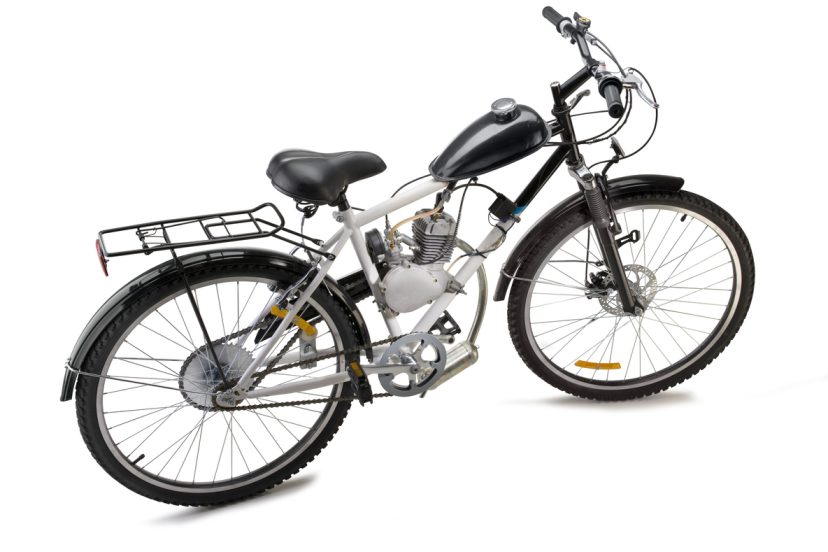Gas Bicycle: A Thrilling Blend of Pedal Power and Petrol Punch
Unleashing the Power of Gas Bicycle
In this article, we’ll delve into the fascinating world of gas bicycle, a unique fusion of pedal power and petrol engines. As an avid cyclist and enthusiast, I’ve explored the benefits and intricacies of this innovative mode of transportation. Join me as we uncover the reasons why gas bicycles are gaining popularity and how they can enhance your cycling experience.
The Marriage of Pedal Power and Petrol
Gas bicycles, also known as motorized bicycles, combine the traditional joy of pedaling with the efficiency of a gasoline-powered engine. This synergy offers a dynamic riding experience, providing a boost when needed while still allowing for manual pedaling.
Fuel Efficiency: Maximizing Your Mileage in Gas Bicycle
One of the key advantages of gas bicycles is their impressive fuel efficiency. The compact engines are designed to make the most out of every drop of petrol, ensuring you cover more ground without frequent refueling stops.
Eco-Friendly Considerations: A Balancing Act
While gas bicycles do utilize petrol, their emissions are considerably lower compared to conventional motorcycles or cars. This makes them a more environmentally conscious choice for short-distance commuting, striking a balance between convenience and eco-friendliness.
Cost-Effective Commuting: Savings in the Long Run
Investing in a gas bicycle can lead to substantial savings in the long run. With lower initial costs compared to traditional motorcycles and significantly reduced fuel expenses, it’s a budget-friendly alternative for daily commuting.
DIY Maintenance: Nurturing Your Gas-Powered Companion
Maintaining a gas bike is a breeze for DIY enthusiasts. The simple engine design and accessible components make routine upkeep straightforward, allowing riders to take charge of their own maintenance.
Legal Considerations: Navigating the Regulations
Before hitting the road on your gas bike, it’s crucial to familiarize yourself with local regulations. Different regions may have specific requirements for motorized bicycles, including licensing, speed limits, and safety gear.
Enhanced Riding Experience: Power on Demand
Gas bicycles provide an extra punch of power when needed, particularly on inclines or during headwinds. This boost ensures a smoother and less strenuous ride, making it an attractive option for both seasoned cyclists and beginners.
Versatility in Terrain: Conquering Any Landscape
With the assistance of a gas engine, tackling hilly terrain or challenging landscapes becomes a far less daunting task. This versatility opens up a world of exploration, allowing riders to venture beyond familiar routes.
Noise Levels: Striking a Harmonious Balance
While gas bicycles do produce some noise, it’s notably quieter compared to conventional motorcycles. This consideration is especially important for those who value a peaceful, unobtrusive commute through urban and suburban areas.
Safety Measures: Prioritizing Your Well-Being
As with any mode of transportation, safety should be paramount. Wearing protective gear, following traffic rules, and regular maintenance checks are essential for a secure and enjoyable gas bicycle experience.
Conclusion: Embracing the Future of Cycling in Gas Bicycle
Gas bicycles offer a dynamic and exciting evolution in the world of cycling. Combining the best of both worlds, they provide an efficient, cost-effective, and eco-conscious mode of transportation. Whether for daily commuting or leisurely rides, a gas bicycle is a thrilling companion on the road.
FAQs: Unlocking the Mysteries of Gas Bicycle
Q1. Are gas bicycles legal everywhere?
A1. The legality of gas bicycles varies by location. It’s crucial to research and adhere to local regulations regarding motorized bicycles.
Q2. How fast can a gas bicycle go?
A2. Gas bicycles can reach speeds between 20 to 30 miles per hour, depending on factors such as engine size and terrain.
Q3. Can I convert my existing bicycle into a gas bicycle?
A3. Yes, many conversion kits are available in the market, allowing you to transform your traditional bicycle into a gas-powered marvel.
Q4. How often do I need to perform maintenance on a gas bicycle?
A4. Routine maintenance, such as oil changes and spark plug checks, should be conducted every 500-1000 miles or as recommended by the manufacturer.
Q5. Are there any age restrictions for riding a gas bicycle?
A5. Some regions may have age restrictions for operating motorized bicycles. It’s essential to check local regulations to ensure compliance.
*We may earn a commission for purchases made using our links. Please see our disclosure to learn more.




